“Now, Roy and Joy had often dozed, through their weekly class in botany;
I’m afraid they were wrongly inclined to think that botany meant monotony.
But the sight botanic they now beheld- would have awakened a sleeping possum!
For every plant had an animal name and a living animal blossom!”
~ “The Animal Garden” by Ogden Nash
Ogden Nash’s book, “The Animal Garden” published in 1965, is a chuckle to read. The rhyming verse and amusing illustrations tell an upbeat story about a family living in a home where no pets are allowed because the parents suffer from allergies. Roy and Joy try to convince their parents to let them have a pet, but their pleas fall upon deaf ears.
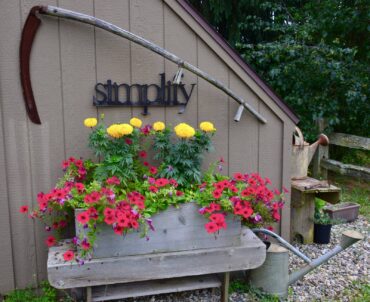
Then to their surprise and delight, one moonlit night, strange little Abidan taps on their bedroom window. He gives them special seeds and slips of plants and shows them how to plant an extraordinary garden. Every plant and seed was named after an animal!
Theme gardens are very popular with children and adults alike. This type of garden is centered around a specific concept or idea. The plants, garden design and elements of garden décor all focus on and support a particular topic. Theme gardens can be fanciful or practical. There’s no limit to the subjects you can explore.
Gardens Named after Animals
Children love animals, so growing a garden where all the plants are named after animals is a natural way to introduce them to gardening and cultural ecology.
Every plant has an interesting past; exploring the origins of plant names, personal characteristics and cultural requirements, uses and history makes them seem like good friends and helps us grow as gardeners.
Classifying Plants
Prehistoric cultures classified plants by place, body parts, odors, shapes, colors, animals, insects and growing conditions. In modern botanical classification, plant names are derived chiefly from Latin and Greek origins, and plants are grouped by sexual reproductive characteristics.
Many common and botanical plant names have been passed along to us with animal names within them. Lamb’s ears, horehound and lion’s ear all bear a resemblance to the animals for which they were named and insects contributed to the identity of butterfly weed, bee balm and spider lily.
Plant the Right Plant in the Right Place
To ensure success when planning and planting your garden, getting the right plant in the right place is essential. While all the plants in this themed garden have animal names, please keep their diverse growing needs in mind.
Some plants are shade-loving; others, such as the catmint ‘Cat’s Pajamas,’ like a dry, sunny spot. Bloom time will also vary according to the species, season and time of day.
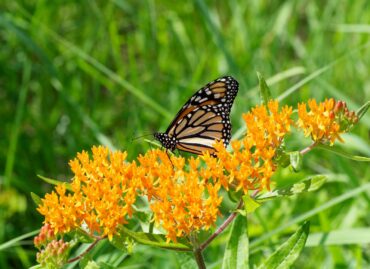
Learn the Growing Conditions
It all begins with understanding the growing conditions of your garden site. Select your plants and group them in the garden according to their cultural and water needs. A plant’s native habitat offers valuable clues on how to grow it.
Knowing the botanical classification or Latin name of a plant will help you correctly identify the plant and its origins. From that information, you can determine some of its growth characteristics. Knowing the life cycle of a plant will help you plan for its future and manage your garden as a whole. Is it an annual, bi-annual or perennial plant?
Annual flowers such as snapdragons, ‘Honey Bear’ sunflowers and nasturtium ‘Whirlybird’ are easy to grow from seed directly sown in the garden. You can purchase perennial plants at your local nursery. Many of the plants listed in this article will attract birds, butterflies and native pollinators to your yard. Trees and shrubs will add depth to the garden and provide homes and shelter for wildlife.
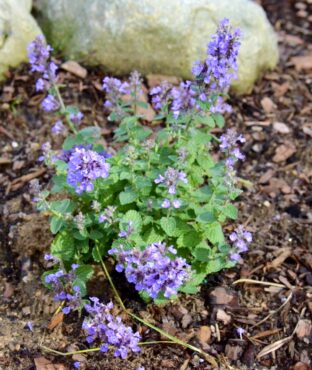
Flowering dogwood (Cornus Florida) is a small native tree that blooms in spring and is very popular with wildlife, birds and butterflies in particular. It’s a favorite of the little blue azure butterfly for laying its eggs.
Pussy willows, despite their unruly growth habit, make a nice specimen plant in an out-of-the-way spot in the yard. There are plenty of willows to pick from with pretty stems and interesting catkins that can be forced in the spring and then dried for later use in craft projects.
Container Gardening with Animal Plant Names
Don’t think you have enough space for a garden? You can always find room for a container garden, using miniature plants with animal names. To name a few: Cosmos ’Little Lady Birds,’ cardinal climber vine and zinnia ‘Polar Bear.’ Animal-shaped containers are also fun to plant and AAS Winner Marigold Big Duck Gold is an easy-to-grow plant from seed and looks great in containers.
Use these plants as garden accents. Plant catnip in a pot shaped like a cat or Bunny Tails, an annual grass in a container shaped like a rabbit.
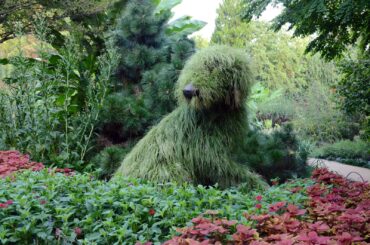
Wildflowers and Weeds with Animal Names
Cultivated plants are not the only plants with animal names. Wildflowers and weeds with animal names can extend the fun beyond the garden’s boundaries.
Goatsbeard (Tragopogon pretenses) is a biennial member of the Asteraceae family and native to Europe, Central Asia and Turkey. The genus name Tragopogon originates from two Greek words: Tragos means “goat” and pogon means “beard,” which describes the fuzzy seed head produced by the plant after flowering. Another common name for this plant is Jack Go To Bed At Noon because of its faithful habit of closing its flowers at about noon. During the 18th century, farmers in France and England based their lunch break on the movement of this flower.
Plants and People
Plants have supported human life from its beginning. The origins and meaning of plant names are a fascinating subject. The many variations of their descriptive labels teach us there are many different ways of relating, knowing and understanding plants and cultural ecology.
These are just a few suggestions of plants with animal names to get you started. Develop your own list and garden plan based on your available site. Check out gardening resources, plants, books and tools offered by National Garden Bureau members on this site to link directly to their websites.
A Short List of Plants with Animal Names
Sun Loving Plants
- Butterfly weed, Asclepias tuberosa
- Bunny Tails, Lagurus ovals
- Cardinal flower, Lobelia cardinalis
- Catmint,Nepeta
- Cranesbill, Geranium
- Dragon’s blood,Sedum
- Harebell, Campanula roundifolia
- Hens and Chicks, Sempervivum
- Lamb’s ear, Stachys lanta
- Leopard’s bane, Doronicum orientale
- Turtlehead, Chelone glabra
- Zebra grass, Miscanthus sinensis
Shade-Tolerant Plants
- Bee balm, Monarda didyma
- Elephant ears, Colocasia esculent
- Goat’s beard,Aruncus diocius
- Monkey-flower, Mimulus rigens
- Spiderwort, Tradescantia
- Wildflowers and Weeds
- Catchfly, Silene armeria
- Cattails, Typha latifolia
- Fleabane, Erigeron
- Horsetail,Equisetum arvense
- Horsemint, Monarda punctata
- Yellow Goatsbeard, Tragopogon pretensis
- Squirrel cup, Hepatica
- Tickseed,Coreopsis lanceolata
- Toadflax, Linaria vulgaris
- Trout lily,Erythronium americanum
- Viper’s bugloss, Erythronium americanum
- Wake Robin, Trillium
Trees and Shrubs
- Butterfly bush,Buddleia
- Dinosaur tree, Ginkgo
- Dogwood, Cornus florida
- Pussy Willow, Salix discolor










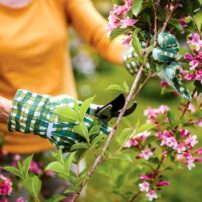

















Comments